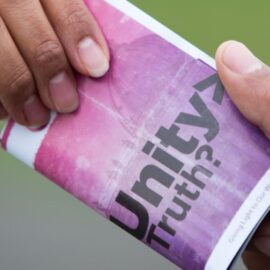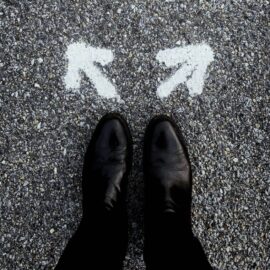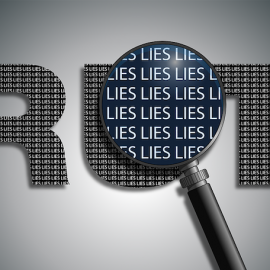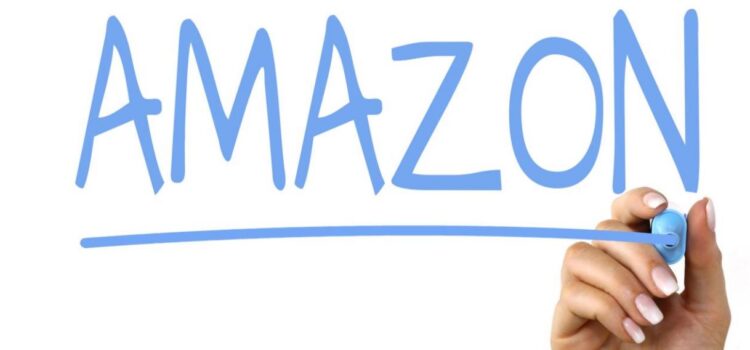
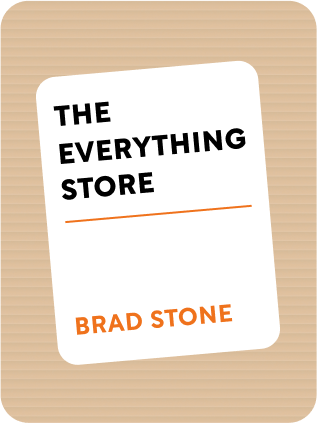
This article is an excerpt from the Shortform book guide to "The Everything Store" by Brad Stone. Shortform has the world's best summaries and analyses of books you should be reading.
Like this article? Sign up for a free trial here .
Is Amazon a monopoly? Why do manufacturers and publishers hate working with Amazon? Why does the public tolerate Amazon even though it has questionable practices?
Amazon devalues manufacturer’s products, undermines the book publishing industry, and acquires as many of its competitors as it can. And yet, the public still embraces Amazon because it’s making an offer we collectively can’t refuse.
Keep reading to learn about Amazon’s monopoly-like behaviors.
Amazon, the Unstoppable
It was around 2011 that people started to wonder if Amazon is a monopoly.
January 2011: Amazon acquires Lovefilm for around $300 million.
- Amazon had been the largest shareholder in this European Netflix clone.
- In 2010, Lovefilm needed additional capital. Google had planned to acquire both Lovefilm and Netflix in 2009, but the deal fizzled due to opposition from its company Youtube and fears that it would not be able to acquire both.
- Instead of letting it seek additional capital, Amazon strongarms Lovefilm into accepting the acquisition deal. Lovefilm had an option to IPO, but with its large shareholder position, Amazon could effectively veto the IPO. This power also prevents other acquirers from entering a bidding war and makes it a toxic asset to invest further in. After a tough negotiation with Amazon, Lovefilm sells near the bottom of its valuation range.
- Soon after, Amazon unveils Amazon Video for the US, free for Prime members. This is a direct challenge to Netflix, which costs $5-8/mo.
Amazon’s Relationship With Manufacturers
2011: Knifemaker Wusthof decides to end its relationship with Amazon after a torturous relationship. (This is a good place to discuss Amazon’s general friction with manufacturers.)
- Manufacturers cannot enforce retail prices, but they decide which retailers to sell to by setting a MAP (minimum advertised price). This requires retailers to stay above a certain price threshold in their advertisements, or else lose the manufacturer’s business.
- Initially in the mid 2000’s, Amazon abides and becomes Wusthof’s second-largest US seller (after Williams-Sonoma). But then Amazon’s automated pricing bot repeatedly violates Wusthof’s MAP requirements, charging $109 for a $125 knife.
- Amazon believes MAPs are vestigial business practices, used by inefficient companies to protect their margins. It gets around MAP by allowing customers to see the price only after adding to the cart.
- (Shortform note: MAPs may have been a stronger strategic move in the past. Before the Internet reaching consumers was expensive, and companies like Williams-Sonoma became large by controlling the distribution to consumers (eg retail stores or catalogues). Because transactions were costly and there were much fewer suppliers than customers, it was higher leverage for companies to build relationships with suppliers, leaving customers as an afterthought. In turn, suppliers were able to enforce policies like MAPs, because there were few winner-take-all players, and suppliers could play retailers off each other as much as retailers could play suppliers off each other.
- The internet made distribution to customers free, neutralizing the distribution advantage of incumbents. Amazon could now reach customers around the country for nearly no cost, and it used its massive customer relationship to exert unprecedented leverage over suppliers.)
- Wusthof stops supplying Amazon in 2006 and delists itself from Amazon. It returns in 2009, and then terminates with Amazon again in 2011.
- No matter – Amazon can still provide Wusthof goods through its Marketplace, by third-party sellers. The sellers can offer even further discounted goods than Amazon can – possibly the cheapest seller is someone with surplus product or someone diverting goods from the manufacturer’s distribution center.
- Further, Amazon offers its Warehouse Deals, selling refurbished and used products.
- The Marketplace is held in constant competitive tension. Sellers compete against each other to offer the lowest prices, driving down margins. They try to build advantages through exclusives and sourcing hot new products, which Amazon is soon to study and provide itself. “Sellers know they should not be taking the heroin, but they cannot stop taking the heroin,” drawn to Amazon’s massive audience.
Amazon and Book Publishing
Early 2011: Amazon is losing some traction in the book industry.
- Random House, the one holdout major publisher, has also adopted the agency model, neutralizing Amazon’s price advantage.
- Barnes & Noble’s Nook and Apple’s iBookstore eat into Amazon’s e-book share, causing it to fall from 90% in 2010 to 60% in 2012.
- Amazon starts a NY-based publishing imprint, with ambitions to secure bestselling books by big-name authors.
- Bezos’s ambition is to remove the gatekeepers from the industry. No longer should old media gatekeepers decide what the public gets to consume – now anyone should be able to create something and find an audience. He envisions a publishing world that includes just the author, who gets most of the royalties, Amazon, and the reader.
- The book world rejects Amazon’s publishing efforts in an allergic reaction. Barnes & Noble and independent bookstores refuse to stock Amazon’s books. It turns out readers still use bookstores for book discovery, and not stocking Amazon’s books makes a big difference in sales.
Amazon: A Monolith?
December 2011: Amazon releases a price-comparison app for smartphones, letting users scan barcodes of products in stores and compare to Amazon’s prices.
- This gets a backlash for spying on competitors’ prices and destroying independent businesses. Amazon risks increasingly being seen as a monolith transferring dollars out of local communities and into its own coffers.
2012: After this media flak, Bezos considers what makes some companies cool and others not.
- Apple, Nike, Disney, Costco, UPS are well-liked. Walmart, Microsoft, Goldman Sachs, ExxonMobil tended to be feared or tolerated. Why?
- He defined some things as not cool: rudeness, defeating tiny guys, close-following.
- Other things are cool: politeness, youth, winning, inventing, defeating bigger guys, conviction, straightforwardness, authenticity, thinking big, reliability.
- Explorers are cool. Conquerors are not cool. Missionaries are cool. Mercenaries are not cool.
- Bezos believes: it’s not enough to be inventive “that pioneering spirit must also come across and be perceivable by the customer base.” (Shortform note: this can explain projects that generate public hype, like drone deliveries and well-funded production of beloved television series like Top Gear.]
March 2012: After a decade of coaxing the press to brand the company as “Amazon.com,” the company rebrands to simply “Amazon.”
April 2012: the DOJ sues Apple and the five publishers of conspiracy to raise e-book prices.
- The five publishers settle. Apple holds out.
- (Shortform note: in March 2016, after several appeals, the Supreme Court declines to hear the case. Apple’s damages are $450 million.)
Fall 2012: Bezos unveils a new line of Kindle Fire tablets and the Kindle Paperwhite.
2012: Amazon has $61 billion in sales.
There are more developments after 2012 in the book and in the real world, but the themes continue:
Prime Expands
- Amazon uses its flywheel effect to make retail more compelling to consumers and add more value to Prime – now including free 2- or same-day delivery; Prime Video; Prime Music; Twitch Prime; and Prime Pantry.
- Amazon introduces the Echo in 2014, now arguably the leading smart speaker and personal assistant, even past Google and Apple.
- It expands its ambition in food by purchasing Whole Foods in 2017, coming closer to Bezos’s 2007 statement: “to be a $200 billion company, we’ve got to learn how to sell clothes and food.”
- In 2018 Amazon unveils Shipping by Amazon, a delivery service for businesses that rivals UPS and FedEx.
- Stressful, tear-inducing work conditions at Amazon are reported in 2015.
- There are increasing concerns about Amazon’s power and intrusiveness into our everyday life.
- And yet, inexorably the country embraces Amazon because it’s making an offer we collectively can’t refuse.

———End of Preview———
Like what you just read? Read the rest of the world's best book summary and analysis of Brad Stone's "The Everything Store" at Shortform .
Here's what you'll find in our full The Everything Store summary :
- How Amazon went from an online bookstore to the largest internet retailer in the world
- What Jeff Bezos did to compete with companies like eBay, Zappos, and Diapers.com
- What it was like to work for Jeff Bezos

